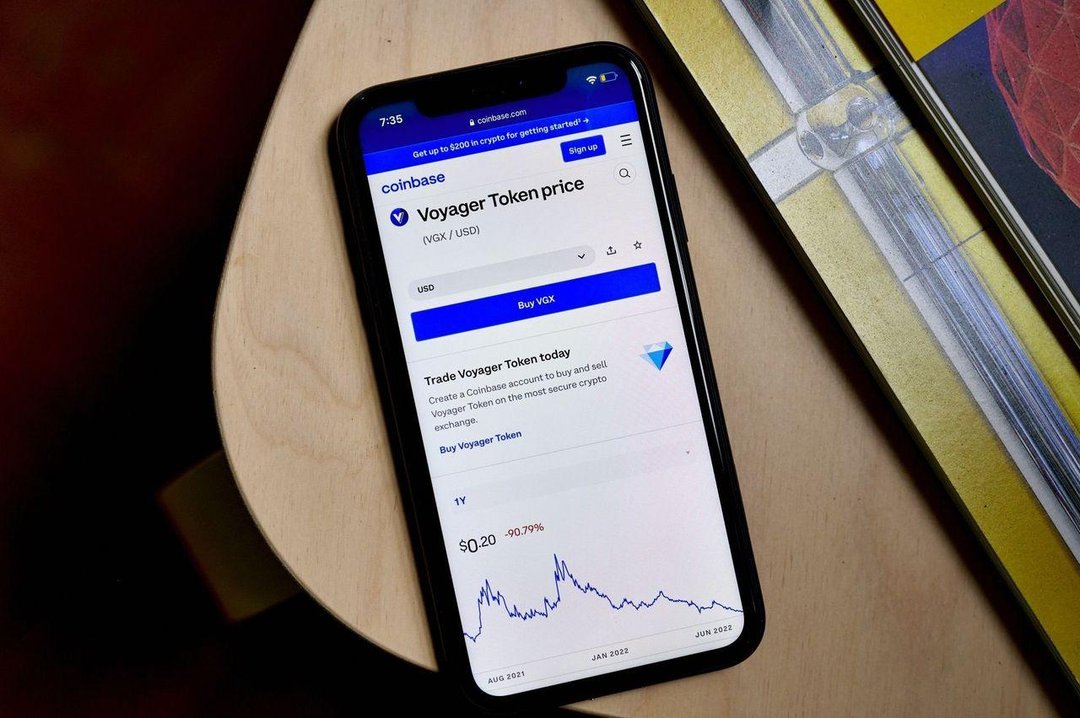
By Greg Ip
Nov. 23, 2022
This year’s crypto collapse has all the hallmarks of a classic banking crisis: runs, fire sales, contagion.
What it doesn’t have are banks.

Check out the bankruptcy filings of crypto platforms Voyager Digital Holdings Inc., Celsius Network LLC and FTX Trading Ltd. and hedge fund Three Arrows Capital, and you won’t find any banks listed among their largest creditors.
While bankruptcy filings aren’t entirely clear, they describe many of the largest creditors as customers or other crypto-related companies. Crypto companies, in other words, operate in a closed loop, deeply interconnected within that loop but with few apparent connections of significance to traditional finance. This explains how an asset class once worth roughly $3 trillion could lose 72% of its value, and prominent intermediaries could go bust, with no discernible spillovers to the financial system.
“Crypto space…is largely circular,” Yale University economist Gary Gorton and University of Michigan law professor Jeffery Zhang write in a forthcoming paper. “Once crypto banks obtain deposits from investors, these firms borrow, lend, and trade with themselves. They do not interact with firms connected to the real economy.”
A few years from now, things might have been different, given the intensifying pressure on regulators and bankers to embrace crypto. The crypto meltdown may have prevented that—and a much wider crisis.
Crypto has long been marketed as an unregulated, anonymous, frictionless, more accessible alternative to traditional banks and currencies. Yet its mushrooming ecosystem looks a lot like the banking system, accepting deposits and making loans. Messrs. Gorton and Zhang write, “Crypto lending platforms recreated banking all over again… if an entity engages in borrowing and lending, it is economically equivalent to a bank even if it’s not labeled as one.”
And just like the banking system, crypto is leveraged and interconnected, and thus vulnerable to debilitating runs and contagion. This year’s crisis began in May when TerraUSD, a purported stablecoin—i.e., a cryptocurrency that aimed to sustain a constant value against the dollar—collapsed as investors lost faith in its backing asset, a token called Luna. Rumors that Celsius had lost money on Terra and Luna led to a run on its deposits and in July Celsius filed for bankruptcy protection.
Three Arrows, a crypto hedge fund that had invested in Luna, had to liquidate. Losses on a loan to Three Arrows and contagion from Celsius forced Voyager into bankruptcy protection.
Meanwhile FTX’s trading affiliate Alameda Research and Voyager had lent to each other, and Alameda and Celsius also had exposure to each other. But it was the linkages between FTX and Alameda that were the two companies’ undoing. Like many platforms, FTX issued its own cryptocurrency, FTT. After this was revealed to be Alameda’s main asset, Binance, another major platform, said it would dump its own FTT holdings, setting off the run that triggered FTX’s collapse.
Genesis Global Capital, another crypto lender, had exposure to both Three Arrows and Alameda. It has suspended withdrawals and sought outside cash in the wake of FTX’s demise. BlockFi, another crypto lender with exposure to FTX and Alameda, is preparing a bankruptcy filing, the Journal has reported.
The density of connections between these players is nicely illustrated with a sprawling diagram in an October report by the Financial Stability Oversight Council, which brings together federal financial regulators.
To historians, this litany of contagion and collapse is reminiscent of the free banking era from 1837 to 1863 when banks issued their own bank notes, fraud proliferated, and runs, suspensions of withdrawals, and panics occurred regularly. Yet while those crises routinely walloped business activity, crypto’s has largely passed the economy by.
Some investors, from unsophisticated individuals to big venture-capital and pension funds, have sustained losses, some life-changing. But these are qualitatively different from the sorts of losses that threaten the solvency of major lending institutions and the broader financial system’s stability.
To be sure, some loan or investment losses by banks can’t be ruled out. Banks also supply crypto companies with custodial and payment services and hold their cash, such as to back stablecoins. Some small banks that cater to crypto companies have been buffeted by large outflows of deposits.
Traditional finance had little incentive to build connections to crypto because, unlike government bonds or mortgages or commercial loans or even derivatives, crypto played no role in the real economy. It’s largely been shunned as a means of payment except where untraceability is paramount, such as money laundering and ransomware. Much-hyped crypto innovations such as stablecoins and DeFi, a sort of automated exchange, mostly facilitate speculation in crypto rather than useful economic activity.
Crypto’s grubby reputation repelled mainstream financiers like Warren Buffett and JPMorgan Chase & Co. Chief Executive Jamie Dimon, and made regulators deeply skittish about bank involvement. In time this was bound to change, not because crypto was becoming useful but because it was generating so much profit for speculators and their supporting ecosystem.
Several banks have made private-equity investments in crypto companies and many including J.P. Morgan are investing in blockchain, the distributed ledger technology underlying cryptocurrencies. A flood of crypto lobbying money was prodding Congress to create a regulatory framework under which crypto, having failed as an alternative to the dollar, could become a riskier, less regulated alternative to equities.
Now, stained by bankruptcy and scandal, cryptocurrency will have to wait longer—perhaps forever—to be fully embraced by traditional banking. An end to banking crises required the replacement of private currencies with a single national dollar, the creation of the Federal Reserve as lender of last resort, deposit insurance and comprehensive regulation.
It isn’t clear, though, that the same recipe should be applied to crypto: Effective regulation would eliminate much of the efficiency and anonymity that explain its appeal. And while the U.S. economy clearly needed a stable banking system and currency, it will do just fine without crypto.
Dow Jones & Company, Inc.



